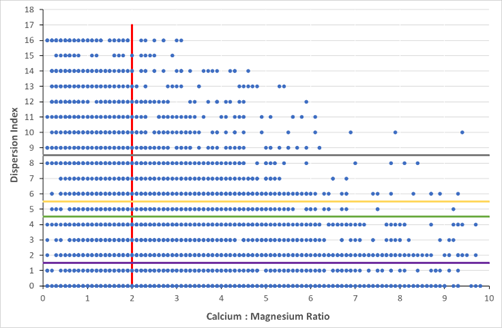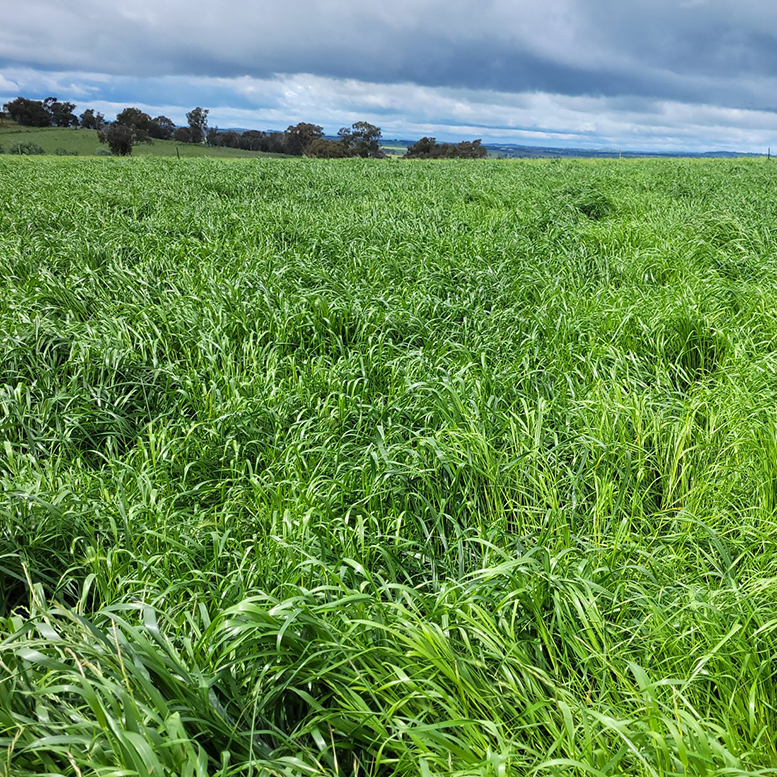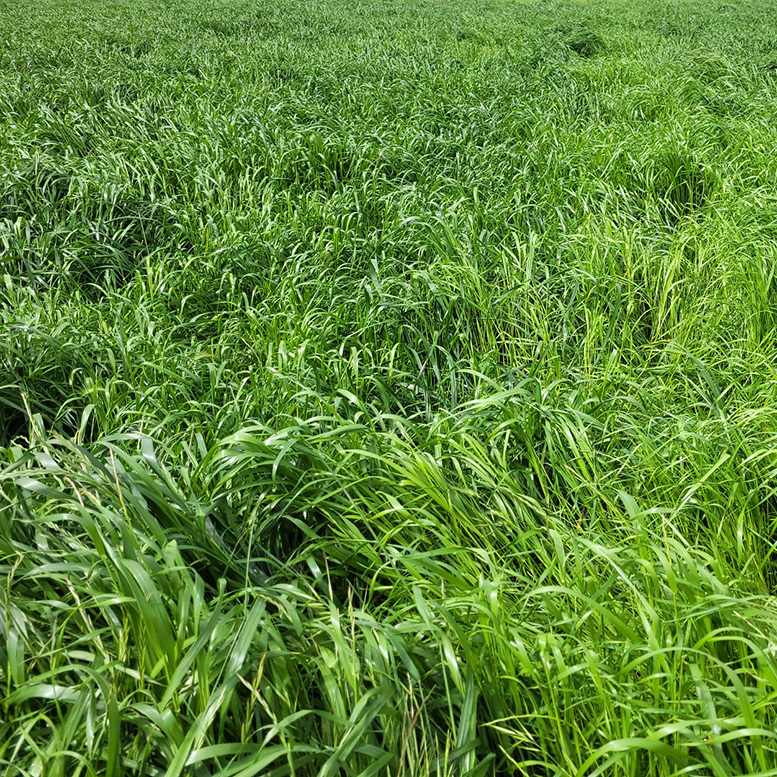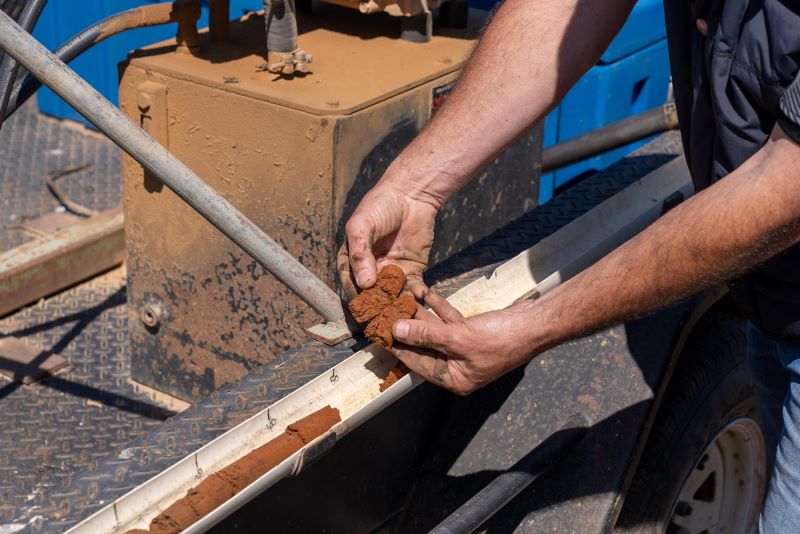Agronomic Insights

Loveday & Pyle test – a comprehensive indicator of soil stability
03 February 2023
Soil structure has a significant impact on crop and pasture productivity. Soils that are well structured with good stability allow plants to develop root systems that explore the soil profile, accessing water, nutrients and oxygen. These soils are generally loosely packed with low bulk density and high porosity compared to poorly structured soils.
David McRae, IPF Technical Agronomist
Many agronomists and growers rely on the calcium to magnesium (Ca:Mg) ratio and exchangeable sodium percentage (ESP) when interpreting the structural stability of soils. These ratios are used as the basis for calculating the amount of soil ameliorant required to improve soil structure. However, often the Ca:Mg ratio does not predict which soils require soil ameliorants.
What is Structural Stability?
Soil structural stability is the resistance of soil aggregates to breakdown when subject to disruptive stresses, such as cultivation, compaction, and raindrop impact. Soils with low stability lose their structured condition quickly.
The addition of water can cause two types of soil structural instability – chemical (dispersion) and physical (slaking). Slaking generally occurs in soils that contain low levels of organic carbon. Soil aggregates break down to form small particles, forming soil crusts which reduce seedling emergence, water infiltration and soil aeration. Dispersion (sodicity) is a collapse of soil aggregates and a separation of clay particles. This is generally caused by too much sodium (Na) (ESP > 6%), potassium (K) and/or magnesium (Mg), with a lack of soluble calcium (Ca).
Dispersion can also occur in soils with very low electrical conductivity (EC). The interactions of these factors produce a variety of situations where dispersion can occur. Dispersion results in hard-setting surface crusts which reduce seedling establishment and, impermeable sub-soil layers which affect air and water movement, reducing root penetration and nutrient and water uptake. The trafficability of these soils by machinery and animals is also affected.
How to Test?
For a comprehensive assessment of soil structural stability, test your soils using the Loveday & Pyle Dispersion & Slaking test. Air-dried unground and re-moulded soil aggregates are assessed after 2 and 20 hours to rate the degree of slaking and dispersion. A combination of both methods is used to calculate the dispersion index, which generates index numbers between 0 and 16.
What do the Numbers Mean?
To highlight the benefit of the Loveday & Pyle Dispersion & Slaking test, 5,000 soil samples were selected from the Nutrient Advantage Laboratory results which contained both Ca:Mg ratio and dispersion index. These results are displayed in Figure 1.
The vertical red line in Figure 1 indicates the Ca:Mg ratio of 2.0. Traditionally, all samples to the right (i.e. greater than 2.0) should be structurally stable and all samples to the left (i.e. less than 2.0) should be unstable. However, this is not the situation as there is a range of stabilities on either side of the red line.

Figure 1: Graph of Dispersion index vs Ca:Mg ratio.
The horizontal lines in Figure 1 represent different dispersion index guidelines for various crop production industries; purple < 2, green < 5, yellow < 6 and grey <9. If we used these categories to classify the selected soil samples, the samples that are stable or have minimal dispersion for the different crop/pasture industries are located below the appropriately coloured line. For this data set:
• New-planted orchards and vegetable crops (purple line) – 32% of all samples.
• Broad-acre and new planted pastures (green line) – 64% of all samples.
• Established orchards (yellow line) – 72% of all samples.
• Established pastures (grey line) – 82% of all samples.
Samples located above the appropriate colour lines would suffer from varying levels of dispersion and impact crop production.
If we based this assessment on Ca:Mg ratio, 62% of all soil samples would be stable and 38% would be affected by varying degrees of dispersion, leading to inappropriate recommendations for soil ameliorants. As demonstrated in figure 1 above, there is no relation between Ca:Mg ratio and dispersion index and the Ca:Mg ratio is therefore a poor indicator of the stability of soils.
To gain a better understanding of the stability of your soils and where soil ameliorants are required, add the Dispersion & Slaking test (Loveday & Pyle, Index 1 to 16) to your existing test code when sampling this season.
Further Information
For more information, contact me on 0477 987 321 or via email at david.mcrae@incitecpivot.com.au
You can also contact your local Incitec Pivot Fertilisers Technical Agronomist or call the Nutrient Advantage Laboratory on 1800 803 453.
Resources
Download InsightDISCLAIMER
This is a guide only, which we hope you find useful as a general tool. While Incitec Pivot Fertilisers has taken all reasonable care in the preparation of this guide, it should not be relied on as a substitute for tailored professional advice and Incitec Pivot Fertilisers accepts no liability in connection with this guide.
Incitec Pivot Fertilisers manufactures and sources fertilisers from other suppliers. The fertiliser supply chain extends beyond the company’s direct control, both overseas and within Australia. Incitec Pivot Fertilisers hereby expressly disclaims liability to any person, property, or thing in respect of any of the consequences of anything done or omitted to be done by any person in reliance, whether wholly or in part, upon the whole or any part of the contents of this article.
You might also be interested in these

Pasture
Getting the most out of winter nitrogen: practical tips for pasture productivity
May / 2025

Pasture
Dedicate time for fertiliser planning
March / 2025

Summer Crop
Deep and meaningful: Deep soil testing can help take the guesswork out of your nutrient plan
July / 2023

Pasture
Optimising pasture health with plant tissue testing
September / 2024

